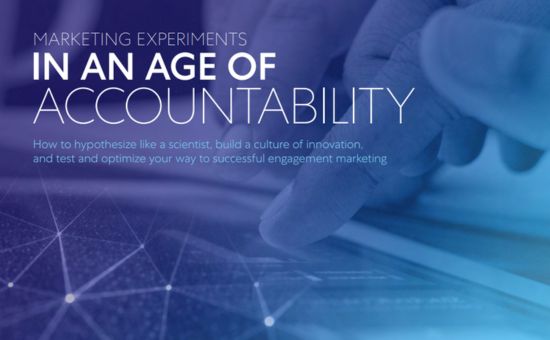The Holy Grail of B2B SaaS Growth: The B2B SaaS Guide to Digital Marketing & Paid Acquisition | Wpromote
Digital Marketing
Why Digital Marketing Channels Are Crucial to B2B Growth
Back in 2015, 89% of people researching B2B products used the internet, and that number has only grown with digital transformation. They’re using the internet in more ways, from search engines to social networks to videos.
Every time a potential customer goes online to research a purchase, they leave a trail: browsing behavior, search queries, viewing habits, and social media engagement. These signals provide key insights to help you understand, serve, and connect with your customers, driving profitable growth.
To capitalize on these opportunities, you need the right strategy. Many B2B SaaS companies recognize the need for a functional website and presence on LinkedIn or Facebook, but they often lack the systems, experts, and tools to maximize their digital properties.
Digital fluency is crucial for success, especially as COVID-19 has shifted more professional interactions online. New research from Google and IPSOS shows that the majority of B2B buyers are increasing spend and are likely to switch vendors, turning to digital channels for their research.

Marketers are responding to this shift: 91% of B2B marketers have increased the use of digital channels, and 81% of tech B2B marketers report improved ROI from online marketing.
Your business’s growth potential depends on effectively activating digital channels to drive qualified leads, build a pipeline, and convert customers.
In this guide, we’ll explore how to overcome the digital marketing challenges facing B2B SaaS businesses. You’ll learn:
- How to define and locate the right customers
- What makes customers likely to convert
- The right marketing touchpoints
- Tracking and attribution across channels
- Paid channel-specific tactics
It’s time to build your customer acquisition engine and optimize your company’s digital channels.
The Secret Sauce of Scaling Customer Growth
The first thing you need to know about paid acquisition: is don’t be afraid to make mistakes. Some strategies will work, others won’t. Continuous testing, learning, and optimization are essential. However, learning can be costly. If the cost is too high, paid acquisition won’t be efficient for your business.
That’s where having a solid strategy comes in: you need to avoid preventable failures before launching campaigns to prevent wasting budget and losing executive support for paid acquisition.
In the first part of this guide, we’ll cover the basics:
- When is my B2B SaaS company ready to start testing paid acquisition?
- How do I determine target KPIs?
- Who should I target, and how do I reach them most effectively?
- Which advertising platforms should be used at each stage of the funnel?
- What messaging should I use for my ads and why?
- How do I set up proper tracking and attribution?
Once these foundational pieces are in place, you’ll be ready to launch campaigns and optimize performance. In the second part of the guide, we’ll dive deep into platform-specific tactics and optimization processes for paid social, display, and paid search, focusing on advanced, actionable insights:
- Which ad types to use
- Targeting techniques
- Building an efficient account structure
- Setting and optimizing bids
- The Secret Sauce of Scaling Customer Growth
- Three Key Ingredients: The Foundation of
- Successful Paid Acquisition
- Understanding Unit Economics
- Developing Customer Personas
- Setting Up Proper Funnel Tracking
- Platform-Specific Tactics & Best Practices
- Audience Targeting
- Account Structure
- Bidding
- Choosing Ad Units
- Conversion Tracking
- Targeting
- Account Structure
- Ad Formats
- Bidding
- Google Ads
- Account Structure
- Keyword Selection
- Ad Copy
- Bidding
- Tracking
- Google Display Network
- Pros and Cons
- Targeting
- Account Structure
- Ad Types
- Bidding
- YouTube Ads
- Gmail Ads
- Conclusion
Number of Pages:
- 53 pages
Pricing:
- Free






